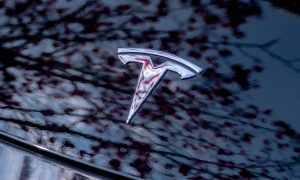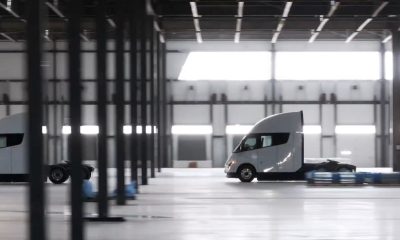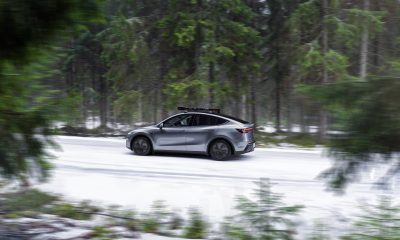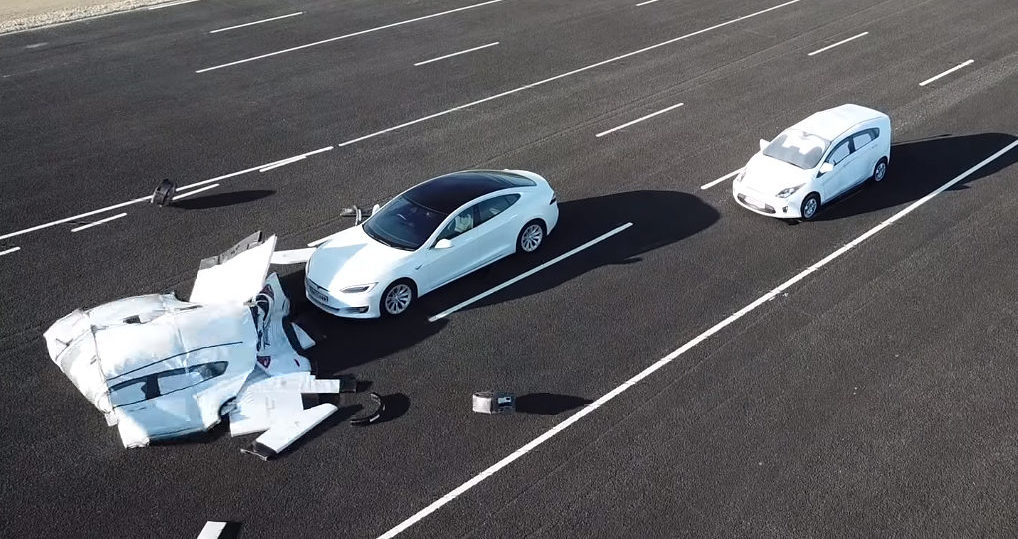

Firmware
Research group demos why Tesla Autopilot could crash into a stationary vehicle
Thatcham Research, a UK-based agency that works for the Association of British Insurers, has concluded that manufacturers such as Tesla need to be clearer and more specific about the differences between the capabilities of its Autopilot driving-assistance system and full self-driving suites like those employed by Waymo and GM Cruise. In an interview with BBC News, Matthew Avery of Thatcham Research stated that features with names such as Tesla’s Autopilot invoke the impression that the vehicles can drive themselves under all circumstances, when they actually can’t.
“There’s a problem with the manufacturers trying to introduce technology and consumers not being ready for it, not being sure if it’s automated or ‘Do I need to keep watching?’ We want it very clear. Either you are driving – assisted – or you’re not driving – automated,” Avery said.
Avery conducted a demonstration of the risks drivers face if they become over-reliant on the capabilities of the driver-assist system. Engaging a Tesla Model S’ Autopilot, Avery opted to do two tests. In the first test, which involved the electric car following a vehicle that slowed to a halt, the Model S performed well. In the second test, however, which involved a lead vehicle changing lanes without warning, the Model S was not able to stop in time, colliding with a stationary car represented by an inflatable dummy in Thatcham’s test track.
Tesla uses an array of 8 cameras, 12 ultrasonic sensors, and a forward-facing radar to detect objects and other vehicles on the road. Enhanced Autopilot, the company’s driver-assist system that utilizes Tesla Vision, uses a combination of Traffic-Aware Cruise Control (TACC) and Autosteer. Traffic-Aware Cruise Control enables drivers to set a speed and follow a lead vehicle while keeping a fixed distance. Autosteer, on the other hand, detects lane markings and the presence of vehicles and objects, steering Model S based on the road’s markings.
There are some instances, however, where TACC would prove inadequate, such as when the lead vehicle is traveling below the user’s set speed before switching lanes. In such a case, the Tesla would match the lead vehicle’s slower speed to prevent a collision, and once the lead vehicle leaves the lane, the electric car would accelerate to achieve its target speed. Based on the results of the preliminary investigation of the NTSB, this scenario was reflected in the fatal Model X crash in Mountain View, CA earlier this year, with the electric SUV accelerating after the car directly in front departed from the lane.
Such instances, however, only happen when drivers become too reliant on Autopilot. If drivers are paying attention to the road, a simple finger-flick of the Tesla’s stalk to disable TACC is enough to stop the car from accelerating and hitting a stationary vehicle. An alert driver would also be able to apply enough brakes and take over the car’s steering on time to avoid a collision. Tesla actually mentions these in the Owner’s Manual of its vehicles.
“Traffic-Aware Cruise Control does not eliminate the need to watch the road in front of you and to manually apply the brakes when needed. It is your responsibility to stay alert, drive safely, and be in control of the vehicle at all times. Never depend on Traffic-Aware Cruise Control to adequately slow down Model S. Always watch the road in front of you and be prepared to take corrective action at all times. Failure to do so can result in serious injury or death.”
As noted in a Jalopnik report, Tesla has responded to the results of Thatcham Research’s test, with the company stating that the Model S’ collision would not have happened had the driver been using Autopilot correctly. The California-based electric car maker further noted that Tesla users understand that their attention on the road is paramount when Autopilot is engaged.
“Tesla has always been clear that Autopilot doesn’t make the car impervious to all accidents and the issues described by Thatcham won’t be a problem for drivers using Autopilot correctly. The feedback that we get from our customers shows that they have a very clear understanding of what Autopilot is, how to properly use it, and what features it consists of,” Tesla noted in a statement to the publication.
In order to increase the safety of its drivers, Tesla has been steadily rolling out safety features for its fleet. The latest update to Autopilot, v8.1(2018.21.9), included a more assertive hands-on alert system that ultimately caused complaints from drivers, with some stating that the system’s reminders have become too intrusive. Musk, for his part, has pledged to adjust Autopilot’s screen alerts to attain a balance between safety and drivers’ convenience. If Musk’s recent Twitter updates are any indication, however, it would only be a matter of months before the company starts rolling out the first full self-driving features to its fleet with the release of Software Version 9 in August.
Watch Thatcham Research’s segment on Tesla’s Autopilot in the video below.
Firmware
Tesla mobile app shows signs of upcoming FSD subscriptions
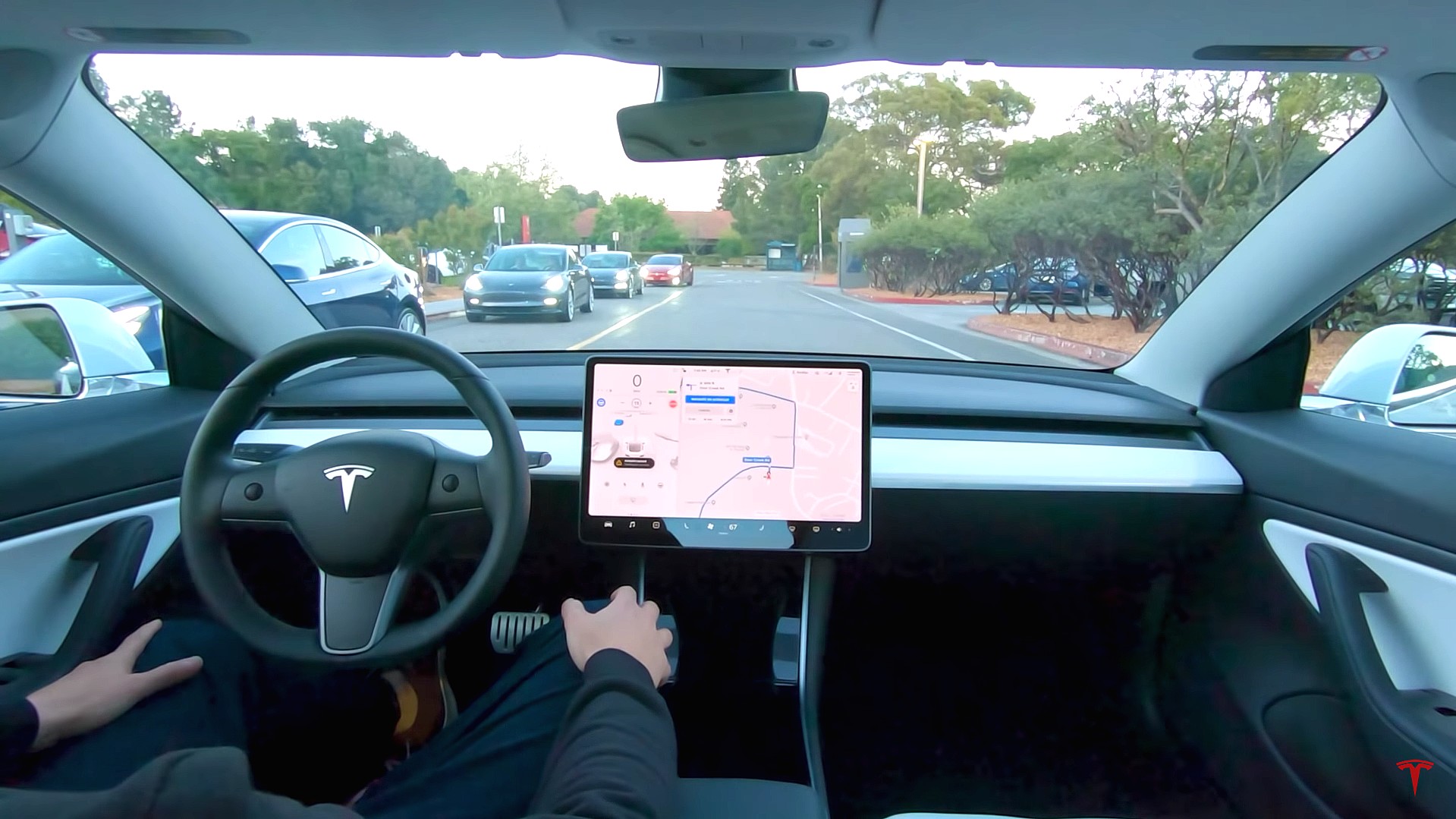
It appears that Tesla may be preparing to roll out some subscription-based services soon. Based on the observations of a Wales-based Model 3 owner who performed some reverse-engineering on the Tesla mobile app, it seems that the electric car maker has added a new “Subscribe” option beside the “Buy” option within the “Upgrades” tab, at least behind the scenes.
A screenshot of the new option was posted in the r/TeslaMotors subreddit, and while the Tesla owner in question, u/Callump01, admitted that the screenshot looks like something that could be easily fabricated, he did submit proof of his reverse-engineering to the community’s moderators. The moderators of the r/TeslaMotors subreddit confirmed the legitimacy of the Model 3 owner’s work, further suggesting that subscription options may indeed be coming to Tesla owners soon.
Did some reverse engineering on the app and Tesla looks to be preparing for subscriptions? from r/teslamotors
Tesla’s Full Self-Driving suite has been heavily speculated to be offered as a subscription option, similar to the company’s Premium Connectivity feature. And back in April, noted Tesla hacker @greentheonly stated that the company’s vehicles already had the source codes for a pay-as-you-go subscription model. The Tesla hacker suggested then that Tesla would likely release such a feature by the end of the year — something that Elon Musk also suggested in the first-quarter earnings call. “I think we will offer Full Self-Driving as a subscription service, but it will be probably towards the end of this year,” Musk stated.
While the signs for an upcoming FSD subscription option seem to be getting more and more prominent as the year approaches its final quarter, the details for such a feature are still quite slim. Pricing for FSD subscriptions, for example, have not been teased by Elon Musk yet, though he has stated on Twitter that purchasing the suite upfront would be more worth it in the long term. References to the feature in the vehicles’ source code, and now in the Tesla mobile app, also listed no references to pricing.
The idea of FSD subscriptions could prove quite popular among electric car owners, especially since it would allow budget-conscious customers to make the most out of the company’s driver-assist and self-driving systems without committing to the features’ full price. The current price of the Full Self-Driving suite is no joke, after all, being listed at $8,000 on top of a vehicle’s cost. By offering subscriptions to features like Navigate on Autopilot with automatic lane changes, owners could gain access to advanced functions only as they are needed.
Elon Musk, for his part, has explained that ultimately, he still believes that purchasing the Full Self-Driving suite outright provides the most value to customers, as it is an investment that would pay off in the future. “I should say, it will still make sense to buy FSD as an option as in our view, buying FSD is an investment in the future. And we are confident that it is an investment that will pay off to the consumer – to the benefit of the consumer.” Musk said.
Firmware
Tesla rolls out speed limit sign recognition and green traffic light alert in new update
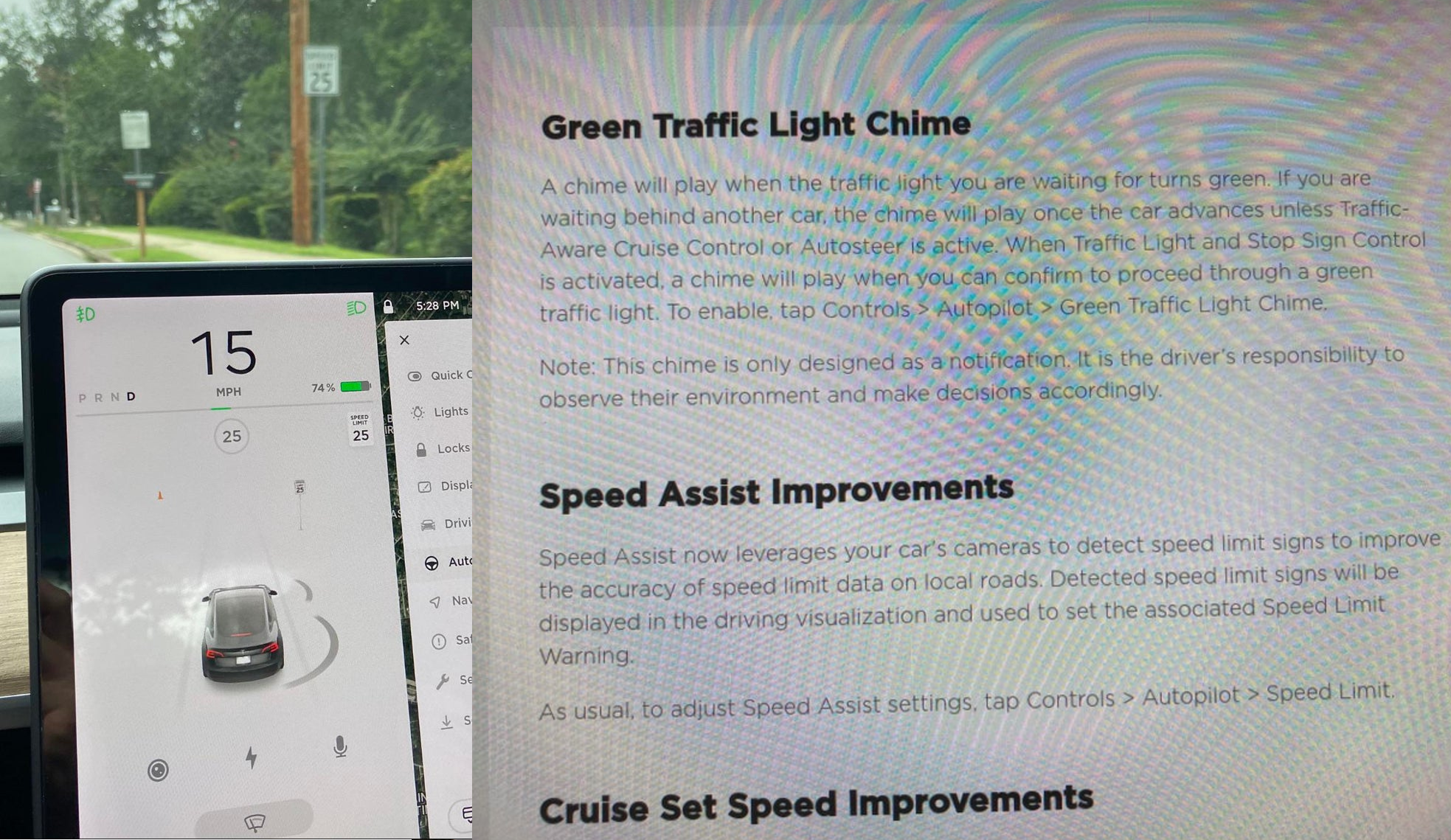
Tesla has started rolling out update 2020.36 this weekend, introducing a couple of notable new features for its vehicles. While there are only a few handful of vehicles that have reportedly received the update so far, 2020.36 makes it evident that the electric car maker has made some strides in its efforts to refine its driver-assist systems for inner-city driving.
Tesla is currently hard at work developing key features for its Full Self-Driving suite, which should allow vehicles to navigate through inner-city streets without driver input. Tesla’s FSD suite is still a work in progress, though the company has released the initial iterations of key features such Traffic Light and Stop Sign Control, which was introduced last April. Similar to the first release of Navigate on Autopilot, however, the capabilities of Traffic Light and Stop Sign Control were pretty basic during their initial rollout.
2020.36 Showing Speed Limit Signs in Visualization from r/teslamotors
With the release of update 2020.36, Tesla has rolled out some improvements that should allow its vehicles to handle traffic lights better. What’s more, the update also includes a particularly useful feature that enables better recognition of speed limit signs, which should make Autopilot’s speed adjustments better during use. Following are the Release Notes for these two new features.
Green Traffic Light Chime
“A chime will play when the traffic light you are waiting for turns green. If you are waiting behind another car, the chime will play once the car advances unless Traffic-Aware Cruise Control or Autosteer is active. When Traffic Light and Stop Sign Control is activated, a chime will play when you can confirm to proceed through a green traffic light. To enable, tap Controls > Autopilot > Green Traffic Light Chime.
“Note: This chime is only designed as a notification. It is the driver’s responsibility to observe their environment and make decisions accordingly.”
Speed Assist Improvements
“Speed Assist now leverages your car’s cameras to detect speed limit signs to improve the accuracy of speed limit data on local roads. Detected speed limit signs will be displayed in the driving visualization and used to set the associated Speed Limit Warning.
“As usual, to adjust Speed Assist settings, tap Controls > Autopilot > Speed Limit.”
Footage of the new green light chime in action via @NASA8500 on Twitter ✈️ from r/teslamotors
Amidst the rollout of 2020.36’s new features, speculations were abounding among Tesla community members that this update may include the first pieces of the company’s highly-anticipated Autopilot rewrite. Inasmuch as the idea is exciting, however, Tesla CEO Elon Musk has stated that this was not the case. While responding to a Tesla owner who asked if the Autopilot rewrite is in “shadow mode” in 2020.36, Musk responded “Not yet.”
Firmware
Tesla rolls out Sirius XM free three-month subscription
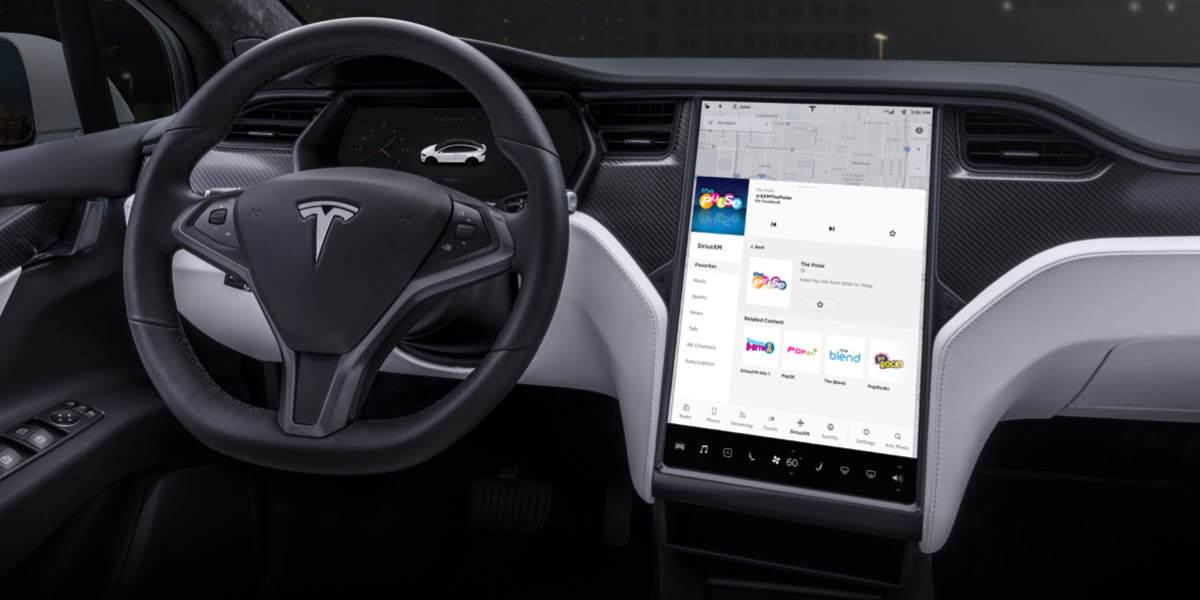
Tesla has rolled out a free three-month trial subscription to Sirius XM, in what appears to be the company’s latest push into making its vehicles’ entertainment systems more feature-rich. The new Sirius XM offer will likely be appreciated by owners of the company’s vehicles, especially considering that the service is among the most popular satellite radios in the country today.
Tesla announced its new offer in an email sent on Monday. An image that accompanied the communication also teased Tesla’s updated and optimized Sirius XM UI for its vehicles. Following is the email’s text.
“Beginning now, enjoy a free, All Access three-month trial subscription to Sirius XM, plus a completely new look and improved functionality. Our latest over-the-air software update includes significant improvements to overall Sirius XM navigation, organization, and search features, including access to more than 150 satellite channels.
“To access simply tap the Sirius XM app from the ‘Music’ section of your in-car center touchscreen—or enjoy your subscription online, on your phone, or at home on connected devices. If you can’t hear SiriusXM channels in your car, select the Sirius XM ‘Subscription’ tab for instruction on how to refresh your audio.”
Tesla has actually been working on Sirius XM improvements for some time now. Back in June, for example, Tesla rolled out its 2020.24.6.4 update, and it included some optimizations to its Model S and Model X’s Sirius XM interface. As noted by noted Tesla owner and hacker @greentheonly, the source code of this update revealed that the Sirius XM optimizations were also intended to be released to other areas such as Canada.
Interestingly enough, Sirius XM is a popular feature that has been exclusive to the Model S and X. Tesla’s most popular vehicle to date, the Model 3, is yet to receive the feature. One could only hope that Sirius XM integration to the Model 3 may eventually be included in the future. Such an update would most definitely be appreciated by the EV community, especially since some Model 3 owners have resorted to using their smartphones or third-party solutions to gain access to the satellite radio service.
The fact that Tesla seems to be pushing Sirius XM rather assertively to its customers seems to suggest that the company may be poised to roll out more entertainment-based apps in the coming months. Apps such as Sirius XM, Spotify, Netflix, and YouTube, may seem quite minor when compared to key functions like Autopilot, after all, but they do help round out the ownership experience of Tesla owners. In a way, Sirius XM does make sense for Tesla’s next-generation of vehicles, especially the Cybertruck and the Semi, both of which would likely be driven in areas that lack LTE connectivity.
-

 Elon Musk2 weeks ago
Elon Musk2 weeks agoTesla investors will be shocked by Jim Cramer’s latest assessment
-

 Elon Musk2 days ago
Elon Musk2 days agoxAI launches Grok 4 with new $300/month SuperGrok Heavy subscription
-

 Elon Musk4 days ago
Elon Musk4 days agoElon Musk confirms Grok 4 launch on July 9 with livestream event
-

 News1 week ago
News1 week agoTesla Model 3 ranks as the safest new car in Europe for 2025, per Euro NCAP tests
-

 Elon Musk2 weeks ago
Elon Musk2 weeks agoA Tesla just delivered itself to a customer autonomously, Elon Musk confirms
-

 Elon Musk1 week ago
Elon Musk1 week agoxAI’s Memphis data center receives air permit despite community criticism
-

 News2 weeks ago
News2 weeks agoXiaomi CEO congratulates Tesla on first FSD delivery: “We have to continue learning!”
-

 Investor's Corner2 weeks ago
Investor's Corner2 weeks agoTesla gets $475 price target from Benchmark amid initial Robotaxi rollout



